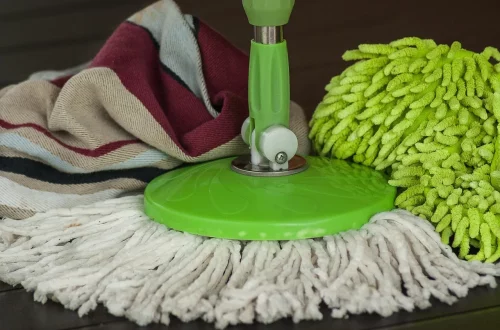
Best Shoes for Comfort and Support with Heel Spurs
Finding the right shoes can be a challenge, especially for those dealing with heel spurs. This common foot ailment can cause significant discomfort and pain, making it crucial to choose footwear that provides both comfort and support. Heel spurs, which are bony growths on the underside of the heel bone, often result from plantar fasciitis or other foot-related issues. Wearing improper footwear can exacerbate the pain and hinder recovery.
In our daily lives, we rely heavily on our feet for mobility, whether walking, standing, or engaging in various activities. Therefore, selecting the right shoes becomes even more essential for those who experience foot abnormalities. Not only do the appropriate shoes alleviate discomfort, but they also promote overall foot health, allowing individuals to maintain an active lifestyle.
With an overwhelming number of options available on the market, understanding the features that contribute to comfort and support can significantly aid in making informed decisions. This article aims to provide valuable insights into the characteristics of footwear best suited for individuals suffering from heel spurs, helping to navigate the often confusing world of shoe shopping for optimal foot care.
Understanding Heel Spurs and Their Impact on Foot Health
Heel spurs are often misunderstood, as many people confuse them with plantar fasciitis. While they are related, heel spurs are actually bony protrusions that develop on the heel bone, typically as a result of prolonged stress on the foot. This stress can arise from various factors, including improper footwear, obesity, and certain types of physical activity.
When heel spurs develop, they can cause significant pain, particularly when standing or walking. The discomfort is usually felt in the heel and can radiate throughout the foot. It often worsens after periods of rest, which is why many individuals find it challenging to start moving in the morning or after sitting for an extended time.
Choosing the wrong shoes can aggravate heel spur pain. Footwear that lacks proper arch support, cushioning, or stability can lead to further stress on the heel. Consequently, it’s essential to understand the characteristics of shoes that can help alleviate this pain. Features such as shock absorption, adequate arch support, and a comfortable fit can play a crucial role in reducing discomfort associated with heel spurs.
Individuals dealing with heel spurs should also consider the types of activities they engage in. For those who are active or spend long hours on their feet, investing in shoes specifically designed for comfort and support can make a significant difference in managing pain and enhancing overall foot health. This understanding is vital in selecting footwear that not only provides relief but also encourages a return to an active lifestyle.
Key Features to Look for in Shoes for Heel Spurs
When shopping for shoes that cater to heel spur relief, specific features should be prioritized to ensure maximum comfort and support. One of the most critical elements is arch support. Shoes with good arch support help distribute body weight evenly across the foot, alleviating pressure on the heel.
Another essential feature is cushioning. Shoes that provide ample cushioning can absorb impact, reducing the stress placed on the heel during activities. Look for shoes with cushioned insoles or those that incorporate advanced materials designed for shock absorption. Memory foam and gel inserts are excellent choices for added comfort.
A wide toe box is also crucial for individuals with heel spurs. A shoe that allows the toes to spread comfortably without restriction can help reduce pressure on the heel and enhance overall foot alignment. This is particularly important for those who may also experience bunions or other foot deformities.
Additionally, consider the shoe’s construction. Shoes that offer a firm heel counter, which is the part of the shoe that wraps around the heel, can provide stability and prevent excessive movement of the foot within the shoe. This helps in maintaining proper alignment and reducing the risk of aggravating heel spur pain.
Lastly, the material of the shoe plays a significant role in comfort. Breathable materials can help keep the feet dry and comfortable, while durable construction ensures the shoes withstand daily wear and tear. Prioritizing these features can lead to a significant improvement in foot health and a reduction in heel spur discomfort.
Types of Footwear Recommended for Comfort and Support
Several types of footwear have been identified as particularly beneficial for individuals suffering from heel spurs. Athletic shoes, such as running or walking shoes, are often designed with comfort in mind. They typically feature cushioning technology and arch support, making them an excellent choice for daily wear or exercise.
Orthopedic shoes are specifically designed with foot health in mind. These shoes often come with removable insoles, allowing individuals to replace them with custom orthotics tailored to their specific needs. This feature can be particularly beneficial for those suffering from heel spurs, as it offers an additional layer of support and comfort.
Sandals with arch support and cushioning are another option worth considering. Many brands now offer sandals designed for comfort, featuring contoured footbeds that can alleviate pressure on the heel while still allowing for breathability during warmer months.
For individuals who need to wear dress shoes, there are stylish options available that do not compromise on support. Look for shoes made from soft leathers with cushioned insoles and a supportive structure. Many brands now offer dress shoes designed specifically for comfort, ensuring that you do not have to sacrifice style for foot health.
Lastly, slippers or house shoes with supportive features can make a difference for those who spend significant time at home. Choosing footwear that provides comfort and support even in a relaxed setting can contribute to overall foot health and help manage heel spur pain effectively.
Tips for Maintaining Foot Health Beyond Footwear
While choosing the right shoes is vital for managing heel spurs, maintaining foot health goes beyond just footwear. Incorporating certain practices into your daily routine can significantly improve overall foot comfort and reduce the risk of exacerbating heel spur pain.
Stretching exercises are an excellent way to enhance flexibility and reduce tension in the feet and calves. Simple stretches targeting the Achilles tendon and plantar fascia can be particularly beneficial. Incorporating these exercises into your daily routine can help alleviate pain and improve mobility.
Weight management is another critical factor. Excess weight can place additional stress on the feet, exacerbating heel spur pain. Maintaining a healthy weight through a balanced diet and regular exercise can contribute to overall foot health and reduce discomfort.
Using orthotic inserts is also an effective way to enhance the support provided by your shoes. These custom or over-the-counter inserts can help distribute weight evenly and provide additional cushioning where it’s needed most. Consulting with a podiatrist can help determine the best type of orthotics tailored to your specific needs.
Lastly, paying attention to how you engage in physical activities is crucial. Avoiding high-impact exercises that stress the heels, such as running on hard surfaces, can help prevent exacerbating your condition. Opting for low-impact activities such as swimming or cycling can provide a good workout without placing undue stress on the feet.
In conclusion, while selecting the right shoes is pivotal in managing heel spur pain, ensuring overall foot health requires a combination of proper footwear, good habits, and potentially the use of orthotics.
**Disclaimer: This article is not intended as medical advice. If you are experiencing health issues, please consult a qualified healthcare professional for guidance.**




